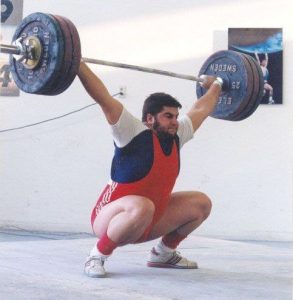
Weightlifting is not just about lifting heavy weights; it’s a complex and dynamic sport that requires proper technique, strength, and a well-structured training program. Whether you’re a novice lifter or an experienced athlete looking to take your lifting to the next level, a comprehensive and progressive weightlifting program is essential. In this article, we will guide you through the process of designing a training program tailored to your level of expertise, from novice to advanced.
1. Understanding the Basics:
Before diving into the specifics of weightlifting programming, it’s crucial to have a solid understanding of the fundamental exercises and techniques. Novice lifters should focus on learning proper form for the snatch and clean & jerk, the two primary lifts in weightlifting. Additionally, they should master accessory exercises like squats, deadlifts, and overhead presses, which contribute to overall strength and stability.
2. Developing a Foundation:
Novice lifters should dedicate the initial phase of their training to develop a solid strength and mobility foundation. This involves focusing on compound movements, such as squats and deadlifts, to build overall strength and increase muscle adaptation. Gradually increasing weights and repetitions is key to progressively overload the body and promote continuous growth.
3. Transitioning to Technical Mastery:
Once a solid foundation is established, novice lifters can shift their focus to mastering the technique of the snatch and clean & jerk. This phase involves specific drills, such as snatch balances, power snatches, and clean pulls, aimed at improving speed, coordination, and barbell control. Working with a knowledgeable coach during this stage can greatly enhance progress and prevent potential injuries.
4. Individualized Program Design:
As lifters progress from the intermediate to advanced level, it becomes crucial to design a personalized training program that aligns with their specific goals and needs. This includes considering factors such as training frequency, workout volume, intensity, and recovery periods. Periodization, which entails dividing training into different phases, can optimize performance improvements while minimizing the risk of overtraining.
5. Incorporating Advanced Techniques:
Advanced lifters can benefit from incorporating advanced techniques like assistance exercises, partial lifts, and complex variations to accelerate their progress. Assistance exercises target specific muscle groups to address weaknesses or imbalances, while partial lifts focus on specific portions of the lifts to increase strength in specific joint angles. Complex variations, such as snatch grip push presses or clean pull + clean + jerk, challenge the lifter to combine multiple movements into a seamless flow.
6. Maximizing Recovery and Injury Prevention:
As the intensity and volume of training increase, recovery becomes paramount. Advanced lifters must prioritize proper nutrition, sleep, and active recovery methods, such as foam rolling or mobility exercises, to optimize their training outcomes. Additionally, maintaining proper technique and listening to the body’s signals can help prevent overuse injuries and long-term setbacks.
Conclusion:
Effective weightlifting programming is a critical component of success in the sport. Whether you’re a novice lifter or an experienced athlete, understanding the basics, developing a solid foundation, mastering technique, and designing an individualized program are essential steps toward achieving your goals. Remember to prioritize recovery and injury prevention to ensure long-term progress and enjoyment in your weightlifting journey. Keep pushing yourself, and you’ll reach new heights in your lifting performance!

